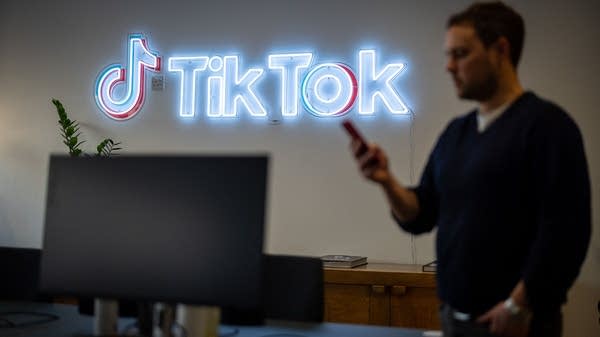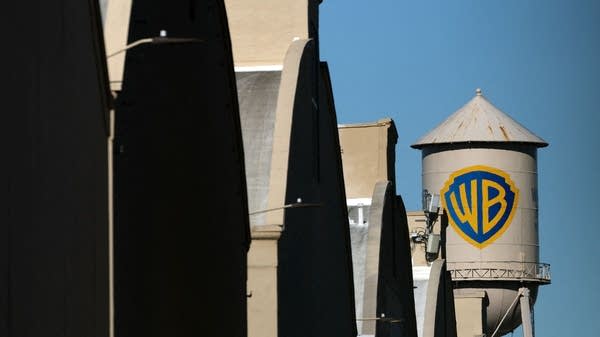Behind streaming platform homescreens, high stakes — and highly strategic — design
There’s design — and dollars — behind what you see when you open Netflix, Disney+ and other services.

For the first time in 12 years, Netflix is redesigning its homescreen. That’s the screen the streaming giant’s 300 million subscribers see when they first log in, right after that trademark “ta-dum” sound.
It’s a big deal not just for Netflix, but for the entire entertainment industry. Whether it’s Netflix or Disney+ or HBO Max, the real estate on streaming homescreens is extremely valuable. What titles appear on that screen, where on the screen they appear, how often they appear — all of that influences what you actually watch.
At the top of most streaming homescreens is typically that big, poster-like image or auto-play clip that eats up half your TV.
Netflix calls it a “billboard.” On Disney+, it’s a “rotating carousel.”
Leading my Disney+ carousel at the moment is a close-up of Elisabeth Moss in a white bonnet and red robe.
“The Handmaid’s Tale” series finale. This is there because it’s the hottest piece of property that the Disney empire currently has to stream,” said Ole Lütjens, former vice president of design at Disney streaming.
I shared my Disney+ homepage with Lütjens over Microsoft Teams. He said the carousel functions as something more than a movie theater marquee.
“It’s the Saks Fifth Avenue, one of the five windows they decorate for every season. It’s the big beautiful display of the best stuff we have to offer that’s supposed to draw you in,” said Lütjens.
That’s partly because audiences are more likely to watch the first big shiny show or movie they see after they log in. (Although how much more likely is each streamer’s closely guarded secret.)
But the carousel is also subliminally seeding what you may want to watch in the future. Like how a McDonald’s commercial at 10 p.m. might make you crave a Quarter Pounder for the next day’s lunch.
“There is the subconscious emotional knowledge that we're loading you up with that might pop up in your brain, just as a behavioral moment, as a habit later,” said Lütjens.
Most of what’s in the Disney+ carousel is content from Disney: Shows and movies from Marvel, FX, Hulu, ESPN, all of which Disney owns.
But like most other streamers, Disney+ also offers shows and movies that they license from other film and TV companies. You just might have to search a little harder for them.
Rashad Qasem is trying to find one of his company’s movies in my homescreen. It’s taking a couple minutes. We scroll through the first few titles in a row called “Drama Movies.”
“You see right at the front, these are all owned titles,” said Qasem. “Hulu, FX, Disney, Hulu, FX, Disney, rinse and repeat. So they're really pushing that stuff forward.”
Qasem heads content licensing and strategy at Shout! Studios. It owns the rights to films like the ‘90s Keanu Reeves bank heist thriller “Point Break” and the stop-motion classic “Coraline.”
With ad-supported streaming services, Shout! and a streamer split the revenue every time an ad is run before or during Shout! titles.
Which is why Qasem tries to negotiate that his titles get a prominent position on a streamer’s homescreen.
“That placement, a hero placement like this at the top, or like, front and center in the first trays, that translates into a lot of money,” said Qasem. “Percentage-wise that could be anywhere from a 25% to a 50% boost.”
Qasem also tries to make sure that after you watch another action movie from the ‘90s or “John Wick” or some bank heist movie, “Point Break” appears in one of those “because you liked” or “recommended for you” rows.
But those placements are trickier.
“To paraphrase ‘Severance’, the algorithm is mysterious and important,” said Qasem.
Nowhere is the algorithm more mysterious or important than the biggest, baddest streamer on the block: Netflix.
“Think of our job as trying to be an incredible matchmaker,” said Patrick Flemming, Netflix senior director of product. “When you click play, you sit back and go, ‘Ah, that was the right one.’”
While that carousel at Disney+ is curated by human marketing teams, Netflix’s homescreen is heavily influenced by what the algorithm thinks you’ll like, based off of your viewing history.
The enemy for Flemming is decision fatigue — aimlessly browsing through those rows and rows of seemingly infinite titles until you say, “Meh, I’ll just spend my evening doomscrolling on my phone.”
“What we hear from members is that they they don't dislike browsing, they just dislike bad browsing,” said Flemming.
So to help you figure out what you want to watch, when you don’t really know what you want to watch, Netflix is piloting a generative AI product. On its mobile app, some Netflix users will be able to utilize a new AI natural language tool — the underlying tech is the same as what powers ChatGPT.













